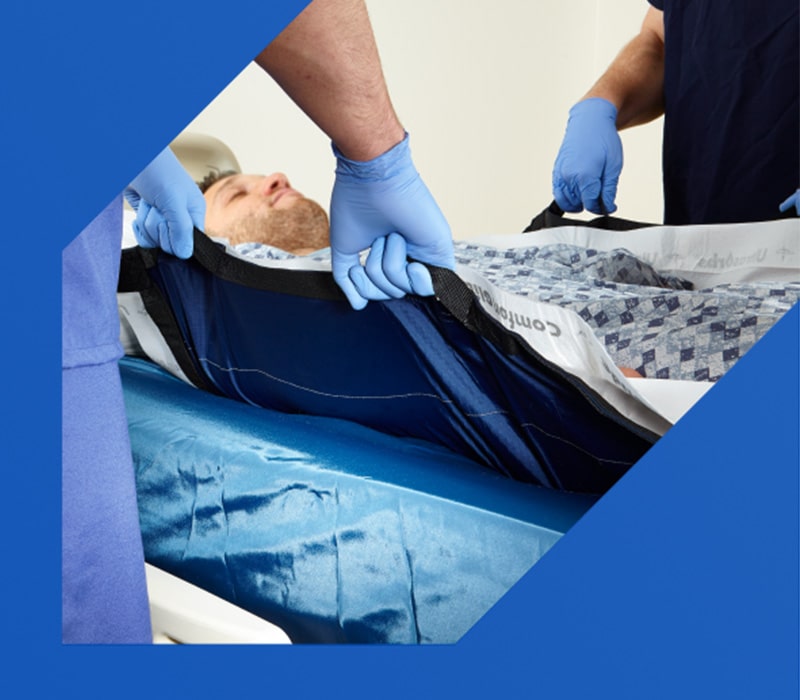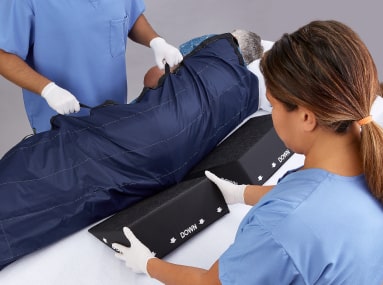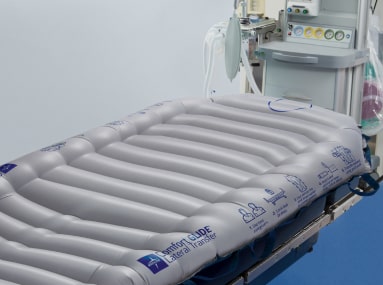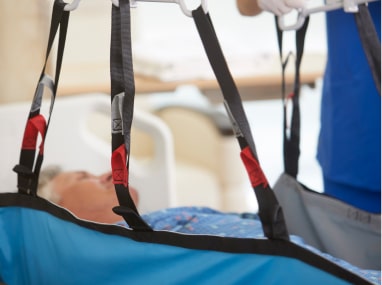Take the pain out of repositioning
Caregivers suffer some of the highest rates of muscoskeletal injuries from overexertion resulting in missed workdays, decreased retention and billions of dollars in direct and indirect cost. 1,2,3
Studies show that repositioning patients using a low-friction glide sheet may help reduce the risk of musculoskeletal strain and injuries to caregivers.4
The cost of caregiver injuries
$15,600
Average worker’s compensation claim related to patient
handling 5
$20B
Estimated direct and indirect costs associated with only back injuries in the healthcare industry 6
36%
Percentage of surveyed nurses that thought about leaving the profession due to pain or back injury 7
75%
Percentage of surveyed nurses that strained themselves while repositioning a patient 7
The ComfortGlide solution
ComfortGlide provides caregivers the important tools to safely boost, turn, reposition and transfer patients based on your facility’s safe patient handling requirements.
Safe handling is equally as important to patients. Those bed-ridden are at risk for pressure injuries, which can develop in as little as one hour.8
Frequent repositioning using transfer aids to reduce friction and shear is recommended to help prevent the development of pressure injuries.7
Caregiver benefits
- Provides the proper tools for caregivers to follow facility protocols
- Reduces risk of injury
Patient benefits
- Wedges provide the NPIAP recommended angle for offloading
- Moisture management pad keeps the skin dry
- Allows for a better experience and outcome
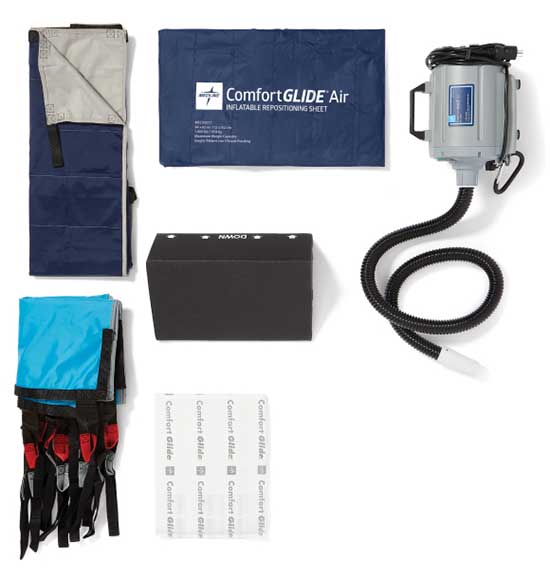
Make caregiver injuries a never event
Keep staff and patients safe from injury. See our ComfortGlide Turning and Repositioning System in action. Simply complete this form and a Medline Representative will contact you soon to schedule your demo.
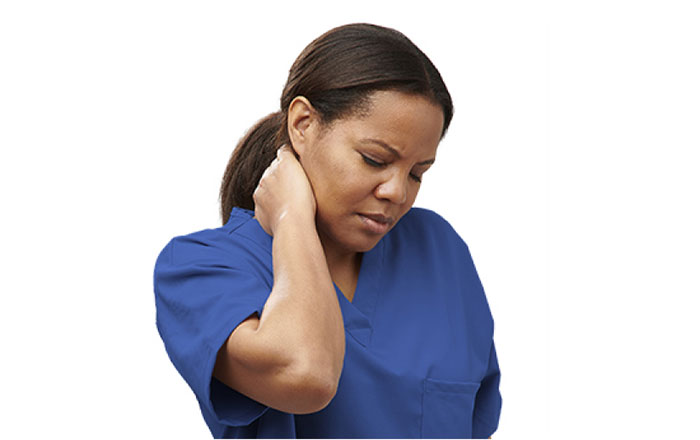
References:
1. de Castro AB. Handle With Care®: The American Nurses Association’s Campaign to Address Work-Related Musculoskeletal Disorders. The Online Journal of Issues in Nursing. 2004;9(3). Available at http://www.nursingworld.org/MainMenuCategories/ANAMarketplace/ANAPeriodicals/OJIN/TableofContents/Volume92004/No3Sept04/HandleWithCare.html. Accessed October 2, 2015.
2. Safe Patient Handling. Occupational Safety and Health Administration (OSHA). Available at https://www.osha.gov/SLTC/healthcarefacilities/safepatienthandling.html. Accessed October 2, 2015.
3. Safe Patient Handling — Preventing Musculoskeletal Disorders in Nursing Homes. Occupational Safety and Health Administration (OSHA). Available at https://www.osha.gov/Publications/OSHA3708.pdf Accessed October 2, 2015.
4. Theou O, Soon Z, Filek S, et al. Changing the Sheets: A New System to Reduce Strain During Patient Repositioning. Nurs Res. 2011; 60(5):302-8. Available at http://www.ncbi.nlm.nih.gov/pubmed/21873921#. Accessed October 2, 2015.
5. Safe Patient Handling Programs: Effectiveness and Cost Savings. Safety and Health Topics. Occupational Safety and Health Adimnistration (OSHA). Available at https://www.osha.gov/sites/default/files/publications/OSHA3279.pdf. Accessed
October 2, 2015.
6. Shekelle PG, Wachter RM, Pronovost PJ, et al.Making Health Care Safer II: An Updated Critical Analysis of the Evidence for Patient Safety Practices. Comparative Effectiveness Review No. 211. (Prepared by the Southern California-RAND Evidence-based Practice Center.) AHRQ Publication No. 13-E001-EF. Rockville, MD: Agency for Healthcare Research and Quality. March 2013. Available at www.ahrq.gov/research/findings/evidence-based-reports/ptsafetyuptp.html. Accessed
October 2, 2015.
7. Data on file.
8. OSHA. Occupational Safety and Health Administration. Safety and Health Topics. Healthcare. Safe Patient Handling. Available at: https://www.osha.gov/SLTC/healthcarefacilities/safepatienthandling.html. Accessed June 17, 2019.
